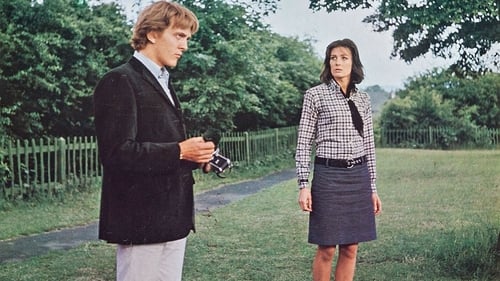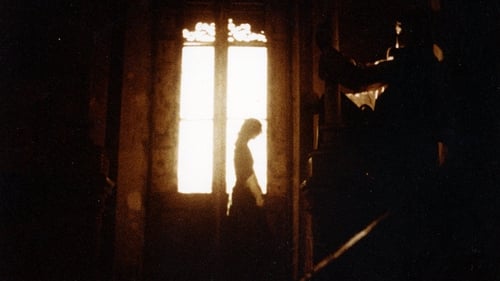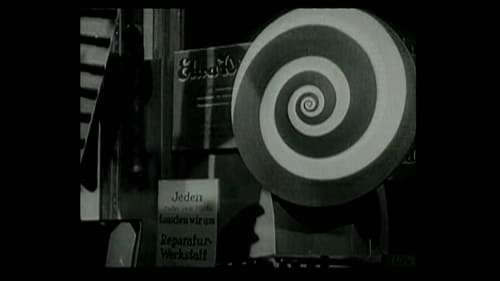A Sense of Nothing
Género :
Tiempo de ejecución : 4M
Director : Francisco Rojas
Sinopsis
A film motivated by nothing (but daily life and (my) vision). It represents nothing, it signifies nothing. There’s no hidden meaning, no defined subject, no predetermined objective. Inside and outside. Just angles, textures and flashes of color. A whole different empire of vision, impossible to be put into words. “Nothing” as anything outside common visual knowledge, anything that defies the logic of naming the world; a possibility for a new way of thinking; of dealing with our visual world.

Flash Passion forma parte de la primerísimas películas rodadas por las dos artistas en Atenas en el momento de hacerse con una cámara Super 8, prolongando en el cine su práctica teatral. Aquí, Maria Klonaris contempla/filma a Katerina Thomadaki.

Smoking es un breve retrato de Maria Klonaris compuesto de siete planos. Katerina Thomadaki lo ha realizado en 2016, dos años después de la desaparición de Maria Klonaris, a partir de imágenes rodadas en 1975, en la época de Double Labyrinthe. La palabra griega inscrita al inicio de la película, μετείκασμα, significa “persistencia retiniana.

With this film-manifesto, the two artists invent what they called the Cinéma corporel (Cinema of the Body), they present themselves as a "double auteur femme" and they lay the foundations of the radical critical and esthetical positions of their work to come. Double Labyrinthe has a mirror structure based on their "mutual gaze": in the first part Katerina performs while filmed by Maria and in the second part Maria performs filmed by Katerina.

Unheimlich III : Les Mères es un viaje de regreso en la memoria. Atravesamos el paisaje griego durante el mes de agosto. Las madres. Las ruinas, vestigios de casas abandonadas, vestíbulos llenos de agujeros, atravesados por el viento, el interior habitado por el exterior. Las Madres, son mis propios orígenes, esta naturaleza griega grabada profundamente en mi cuerpo, esas mujeres que emergen de lugares lejanos, habitados, y yo, vestida de negro, vestida de blanco, madre de visiones que dan a luz a las imágenes.

A meditative journey through an ancient and desolate land enveloped in an ever darkening mist.

A young father struggles with his art and an infatuation, while his young daughter may be the key to saving the future, if the weird aliens and talking animals who observe the family in their little alley may be believed.

Superman's pal Jimmy Olsen gets his own story. Boy meets girl. Boy loses girl. Boy meets boy!

Bodies and movements recomposed from thousands of pornographics images.

Topographical video born from the meeting of a tunnel located at Hamburg (Germany) and Mictlan, the Aztec underworld. Circular and underground journey towards the dematerialization.

Sunny. Semantic sequences guide the gaze, a gaze that is sometimes raised, propelled downwards, then too high or motionless in front of an unrecognizable and yet so familiar vision. The images, linked by echoes of chromatic palettes and linear layers, scroll to the rhythm of a voice, reminiscent of an incantation. Sacred.

Adaptación de un cuento de Julio Cortázar que narra la historia de un fotógrafo que, tras realizar unas tomas en un parque londinense, descubre al revelarlas una forma irreconocible que resulta ser un cadáver. Premiada en el Festival de Cannes con la Palma de Oro.

Study of posters and graffiti on the walls of Paris, using ellipses, brief shots and quick camera movements...

Experimental film by Manuel Huerga.

Inspirado en el documental soviético "Kino-Nedelia" (1918) de Dziga Vertov, Ruttmann realizó en 1927, contando con los mejores fotógrafos alemanes de la época, un documental basado en la vida, durante un día, de la ciudad de Berlín.

Short experimental animation.

A synthesized video environment.

"Single Frame sequences of TV or film images, with periodic distortions of the image. The images are airplanes, women men interspersed with pictures of texts like: 'silence, genius at work' and 'ich liebe dich.' The end credit is 'Television décollage, Cologne, 1963."

In an endless loop, unexposed film runs through the projector. The resulting projected image shows a surface illuminated by a bright light, occasionally altered by the appearance of scratches and dust particles in the surface of the damaged film material. This a film which depicts only its own material qualities; An "anti-film", meant to encourage viewers to focus on the lack of concrete images.








